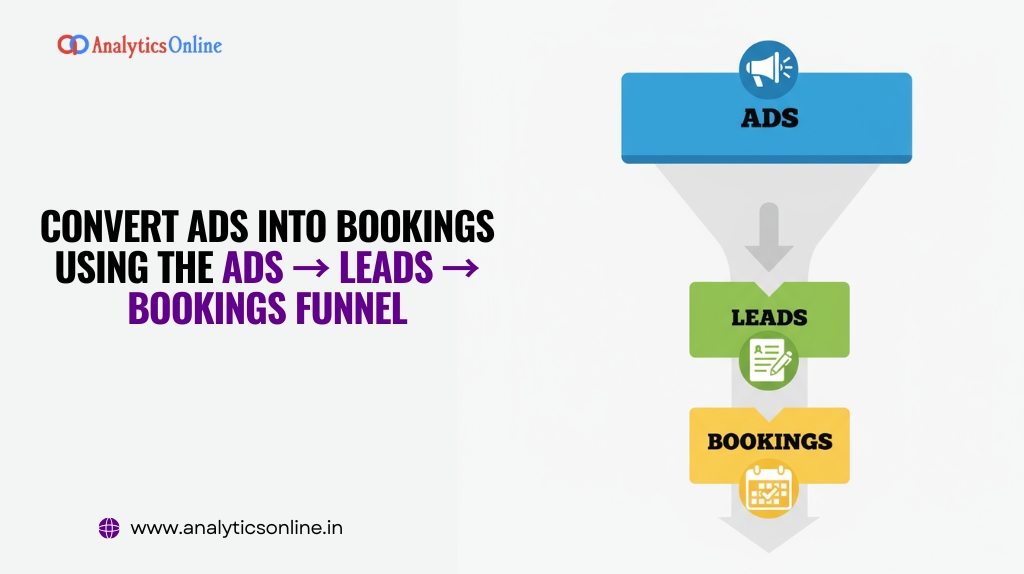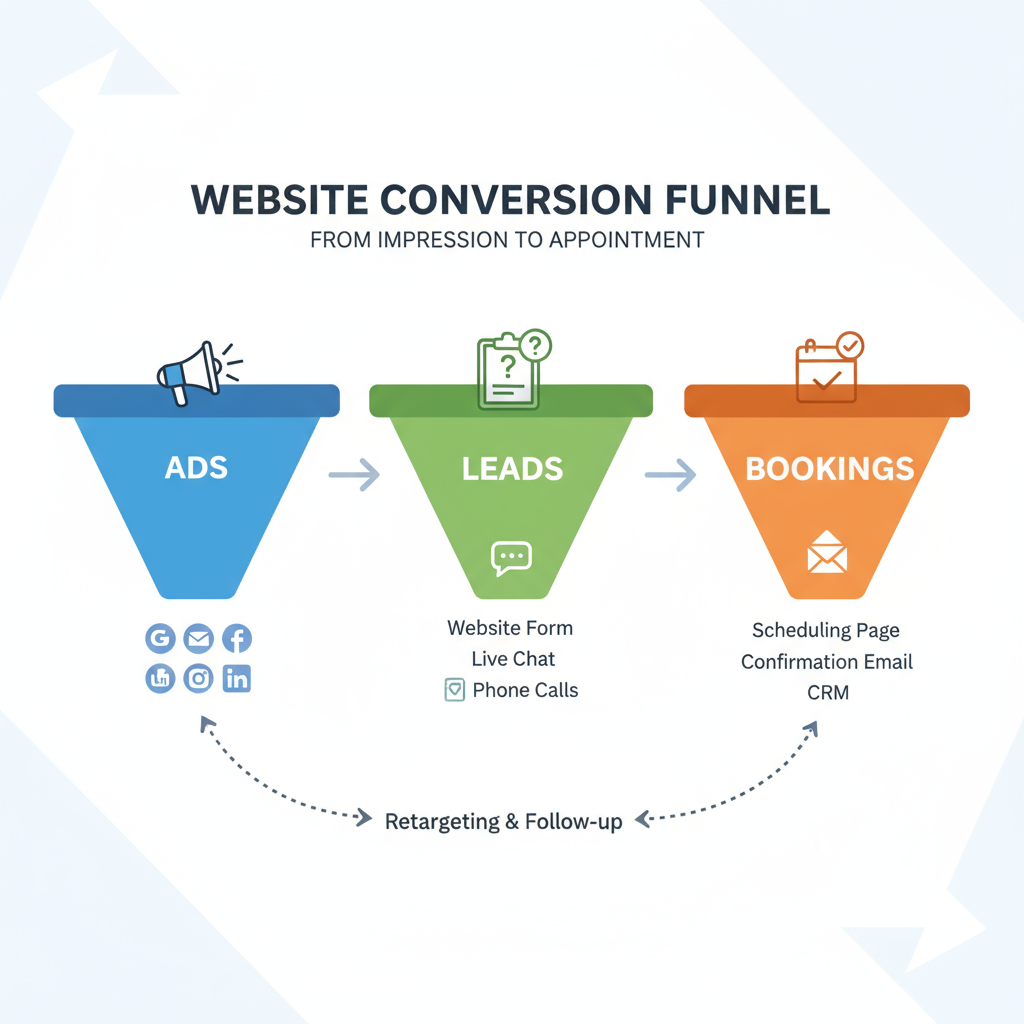
In today’s competitive digital world, simply running advertisements is not enough to grow a business. The true magic happens when those ads lead to real customers booking your services or buying your products. To bridge this gap, businesses rely on a strategic marketing funnel that moves prospects step-by-step from Ads, to Leads, and finally to Bookings. This blog explains how this funnel works and why it’s critical for business success.
Understanding the Funnel: Ads → Leads → Bookings
Think of the funnel as a journey for a potential customer:
- Ads: At the top, you advertise to a broad audience across platforms like Google, Facebook, Instagram, or LinkedIn. This stage is designed to attract attention and create awareness about your business offerings.
- Leads: In the middle, interested individuals provide their contact details or information in exchange for something valuable. These leads represent potential customers who have expressed interest and entered your sales pipeline.
- Bookings: At the bottom, leads are nurtured and converted into paying customers who make bookings or purchases.
This funnel helps businesses understand the customer journey and optimize each stage for better conversions.
Step 1: Attract with Compelling Ads
Advertisements play the crucial role of grabbing the audience’s attention. Successful ads use eye-catching visuals, concise messaging, and clear benefits to spark curiosity. Targeting the right audience by demographics, interests, or behaviors ensures that the ads reach people who are more likely to be interested.
Your ads should clearly convey the problem you solve or the value you offer. Including a strong call-to-action (CTA) prompts users to take immediate action, such as clicking to learn more or signing up for a webinar.
Step 2: Turning Visitors into Leads
The transition from ad viewer to lead happens when users engage further with your content, usually by filling out a form or signing up for a resource. Landing pages designed for lead generation are critical at this stage.
A good landing page provides:
- A clear offer (discount, ebook, free consultation)
- Minimal distractions
- Easy-to-fill forms asking for key information only
When visitors share their contact details, they enter your system as leads for future engagement. This is a vital phase because capturing accurate data allows you to nurture potential customers effectively.
Step 3: Nurturing Leads to Secure Bookings
After generating leads, the focus shifts to turning these leads into paying customers. This often requires a personalized approach, where you build trust and address any doubts through follow-up emails, product demonstrations, or offers.
Lead nurturing strategies include:
- Automated email drip campaigns targeted to lead segments
- Sharing testimonials, case studies, or FAQs to address concerns
- Offering limited-time discounts or exclusive deals to encourage bookings
The goal is to keep your business top of mind and make the path to booking smooth and irresistible.
Why Use the Ads → Leads → Bookings Funnel?

Utilizing this funnel approach offers several benefits for any business:
- Improved Clarity: It clarifies the flow of customers from initial interest through to purchase, highlighting where the business needs to focus efforts.
- Better Targeting: Knowing the funnel allows you to create tailored messaging for each audience segment — ads to attract, offers to convert, and communication to close sales.
- Increased Efficiency: Automations and insights built into the funnel workflow help streamline marketing and sales efforts, reducing manual workload.
- Higher Returns: Optimizing each step reduces drop-offs and leverages every lead towards booking, maximizing the value from your advertising spend.
Best Practices to Maximize Funnel Performance
To get the most from the Ads → Leads → Bookings funnel, consider these best practices:
- Test and Optimize Ads: Use A/B testing to continuously improve ad copy, images, and targeting.
- Streamline Lead Capture: Minimize form fields to reduce friction and increase sign-up rates.
- Segment Leads: Group leads by behavior or source to deliver personalized nurturing.
- Track Metrics: Use analytics to monitor conversion rates at each stage and identify bottlenecks.
- Use Clear CTAs: At every stage, guide the prospect toward the desired action with clear and compelling calls-to-action.
Tools to Help Build Your Funnel
You don’t have to build this funnel from scratch. Many marketing platforms offer integrated tools to help:
- Ad Platforms: Google Ads, Facebook Ads Manager for targeted ad campaigns.
- Landing Page Builders: Unbounce, Leadpages, or custom CMS tools.
- Email Marketing Automation: Mailchimp, HubSpot, or ActiveCampaign for lead nurturing.
- CRM Systems: Salesforce, Zoho, or Pipedrive to track leads and bookings.
Conclusion: Start Closing More Bookings Today
The Ads → Leads → Bookings funnel is a proven framework for turning marketing spend into real revenue. By attracting the right audience with ads, converting them into leads by offering value, and nurturing those leads until they book your service, businesses can build reliable, scalable growth.
Visual tools like the infographic above not only clarify your funnel strategy but also inspire confidence among your team and clients.
Take the first step today—map out your marketing funnel using this model and watch your bookings grow!




